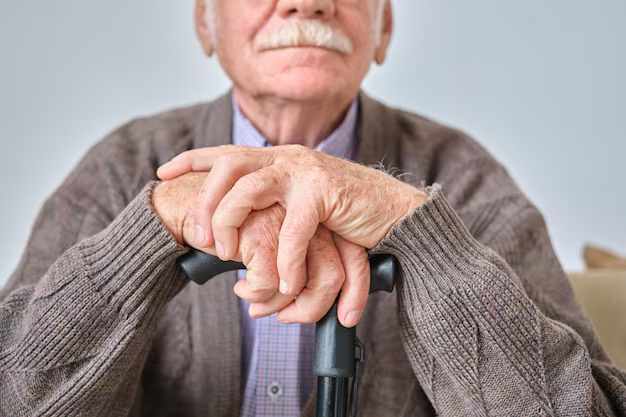Unveiling the Mystery: What Causes Osteoporosis and How to Understand It Better
Osteoporosis is often dubbed the "silent disease," sneaking up on individuals without warning until a minor fall results in a serious fracture. With bones losing density and becoming fragile, understanding the causes of osteoporosis is critical, as it empowers individuals to take preventive measures to safeguard their bone health. Let's dive into the factors contributing to this condition and explore associated aspects that bring clarity and insight to this widely impacting issue.
What is Osteoporosis?
Osteoporosis is a condition that weakens bones, increasing the risk of sudden and unexpected fractures. It's characterized by a decrease in bone mass and density, which can exacerbate the risk of breaks, particularly in the hip, spine, and wrist. While it's more common in older individuals, understanding its causes can help mitigate its onset and impact.
The Biology Behind Osteoporosis
Bone Remodeling: A Lifelong Process
Bones are living tissues that undergo continuous remodeling. This process involves the breakdown of old bone and forming new bone tissue. When the creation of new bone doesn't keep pace with the removal of old bone, osteoporosis develops.
The Role of Osteoclasts and Osteoblasts
Two main types of cells are involved in bone remodeling:
- Osteoclasts, which break down bone tissue.
- Osteoblasts, which are responsible for building new bones.
When osteoclast activity outpaces osteoblast activity, bone density decreases, leading to osteoporosis.
Key Risk Factors for Osteoporosis
Age and Gender
- Age: As individuals age, bone density naturally decreases. After the mid-30s, the rate of bone breakdown begins to outstrip the rate of bone formation, increasing osteoporosis risk.
- Gender: Women are more susceptible to osteoporosis than men, notably because they have less bone tissue and experience a rapid decline in estrogen levels after menopause, which protects against bone loss.
Hormonal Changes
Hormones play a pivotal role in bone health. Women face higher risks post-menopause due to a decline in estrogen. Similarly, men with low testosterone levels can also experience bone density loss.
Genetic Predisposition
A family history of osteoporosis or fractures can significantly increase one's risk. Genetics play a crucial role, with certain gene variants linked to bone mineral density.
Lifestyle Factors
- Diet: Insufficient calcium and vitamin D intake can heighten osteoporosis risk. These nutrients are crucial for bone health.
- Physical Activity: A sedentary lifestyle contributes to weaker bones. Weight-bearing exercises help build and maintain bone density.
Smoking and Alcohol Consumption
- Smoking: Smoking affects the body's ability to absorb calcium, thereby impacting bone health.
- Alcohol: Excessive alcohol consumption can interfere with the balance of calcium and the production of bone-building hormones.
Medical and Health Conditions
Certain medical conditions and medications can also contribute to the onset of osteoporosis, including:
- Rheumatoid Arthritis
- Chronic Inflammatory Diseases
- Thyroid Problems: Overactive thyroid can accelerate bone loss.
- Gastrointestinal Diseases: Conditions like celiac disease affect nutrient absorption, crucial for bone health.
The Role of Diet in Bone Health
Essential Nutrients
- Calcium: Fundamental for developing and maintaining strong bones. Dairy products, leafy green vegetables, and fortified foods are excellent sources.
- Vitamin D: Facilitates calcium absorption. It’s found in fatty fish, liver, and fortified foods.
- Protein: Necessary for bone strength. Lean meats, legumes, and eggs are good protein sources.
Foods to Avoid
Certain foods can have an adverse impact on bone health:
- High-Sodium Foods: Excessive salt can cause calcium loss through urine.
- Caffeine: Excessive caffeine intake can reduce calcium absorption.
Preventive Strategies to Strengthen Bones
Regular Exercise
Engaging in regular weight-bearing and strength-training exercises is beneficial. Activities like walking, jogging, and lifting weights strengthen bones and improve balance.
Healthy Lifestyle Choices
- Avoid smoking and limit alcohol intake.
- Ensure a balanced diet rich in crucial nutrients for bone health.
Regular Health Check-Ups
Regular check-ups, bone density tests, and monitoring can help detect early signs of bone density loss.
Emerging Research and Future Prospects
The field of osteoporosis research is continually evolving. Emerging treatments and preventive measures focus on:
- Genetic Research: Understanding genetic markers can pave the way for personalized treatment.
- New Medications: Scientists are researching new drugs that mimic bone-building hormones.
- Nutritional Supplements: Investigating alternative supplements that may aid in bone retention.
Conclusion: Empowering Knowledge for Better Bone Health
Understanding the causes of osteoporosis is the first step toward proactive management and prevention. While factors like age and genetics are beyond control, lifestyle adjustments can make a significant impact. By maintaining a balanced diet, exercising regularly, and adopting healthy lifestyle habits, individuals can take charge of their bone health. This comprehensive insight into osteoporosis opens the door to informed choices, ultimately leading to stronger bones and a reduced risk of fractures. Remember, while you can’t change some risk factors, embracing a healthy lifestyle goes a long way in promoting good bone health.
Quick Insights and Tips 🌟
- Regular Exercise: Incorporate weight-bearing activities like walking or yoga into your routine. 🏃♀️🧘♂️
- Healthy Diet: Focus on calcium-rich foods like dairy, green leafy vegetables, and fish. 🥛🍃🐟
- Lifestyle Choices: Avoid smoking and drink alcohol in moderation. 🚭🍷
- Stay Informed: Keep up with regular health check-ups and bone density screenings. 🩺
- Educate Yourself: Understanding your family history and genetic predisposition can guide preventive measures. 📚🧬
- Supplement Wisely: Ensure adequate intake of essential nutrients, including calcium and vitamin D. 🌞🥬
By staying informed and proactive, you can help keep your bones healthy and reduce the risk of osteoporosis. 🦴✨

Related Articles
- a Nurse Is Caring For a Client Who Has Osteoporosis.
- a Percutaneous Is Performed To Treat Osteoporosis Related Compression Fractures
- Can Alcohol Cause Osteoporosis
- Can I Do Pilates If I Have Osteoporosis
- Can I Reverse Osteoporosis
- Can Men Get Osteoporosis
- Can Osteoporosis Affect Teeth
- Can Osteoporosis Be Cured
- Can Osteoporosis Be Painful
- Can Osteoporosis Be Reversed